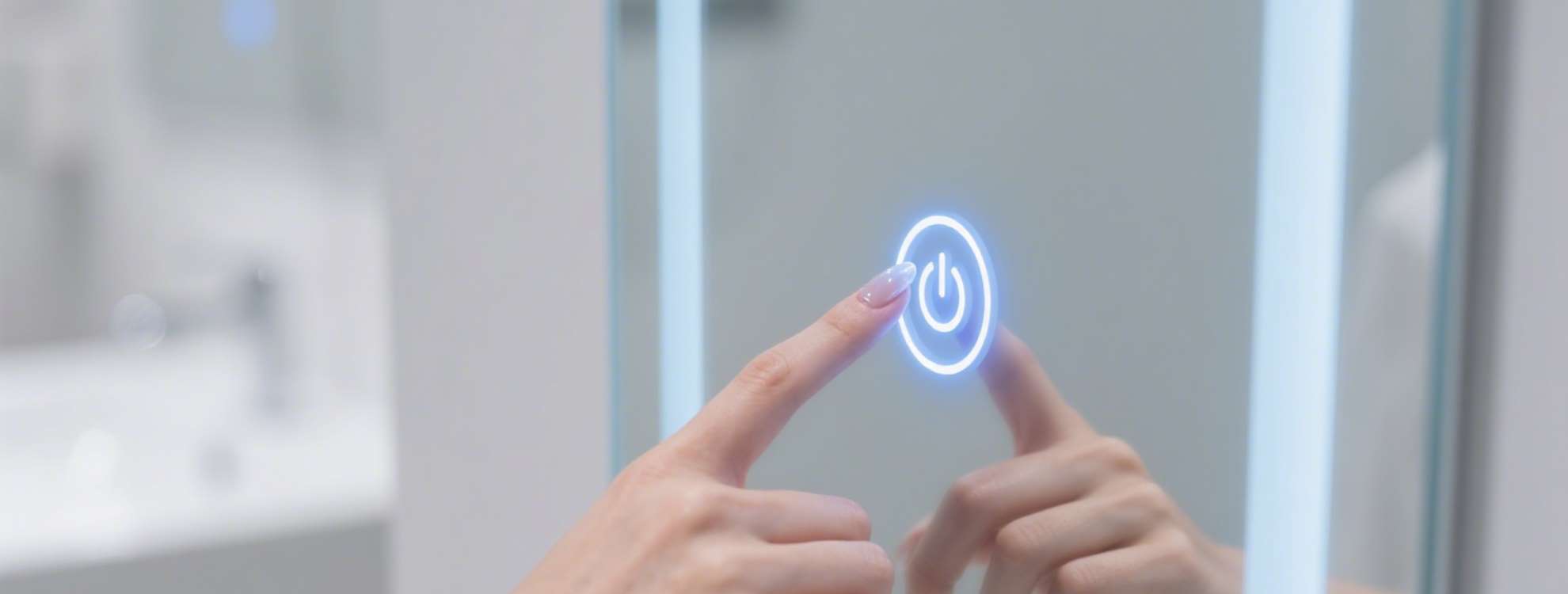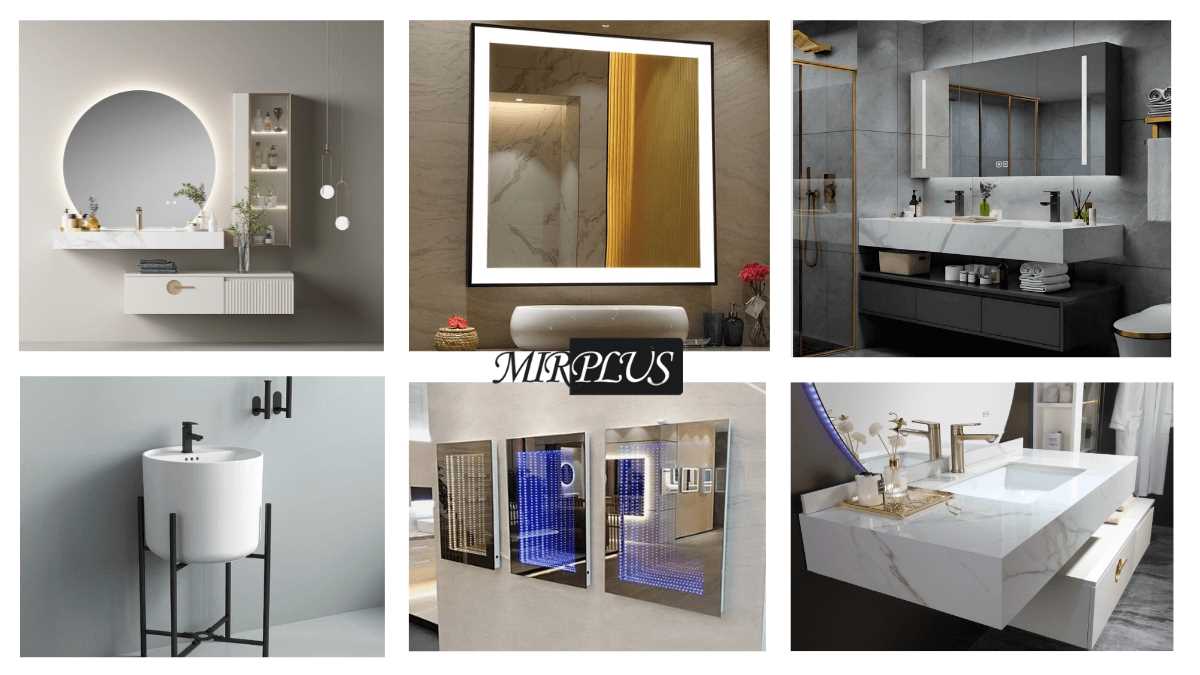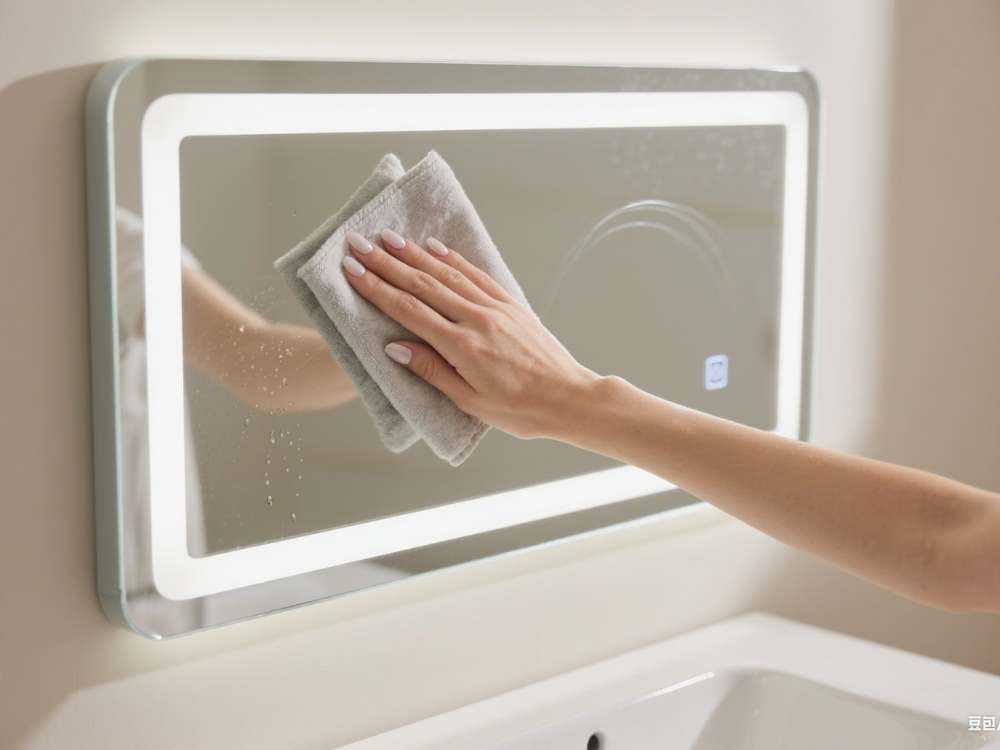
Touch sensor bathroom mirrors have become a popular choice for modern bathrooms, offering convenience and a sleek, minimalist design. With just a simple touch, you can switch the light on or off, adjust brightness, or even change color temperature. But like any electronic product, these mirrors can sometimes stop working as expected. Fortunately, fixing it is not that difficult. From simple power supply checks to environmental factors, there are several steps you can take to LED mirror troubleshooting effectively. Let’s explore how to get your mirror back to working order.

Like other modern devices with advanced features, touchscreen bathroom mirrors are not immune to certain issues. Humidity, repeated button presses, and accidents can all cause problems with these mirrors.
When your touch sensor mirror isn’t responding, several issues could be at play.
Power supply issues can greatly hinder the performance of your touch sensor mirror, leading to frustrating malfunctions. The touch sensor mirror may not work if it is not powered adequately. Below are common power-related problems:
Maybe interested: 8 Common Led Bathroom Mirror Problems (and How to Solve Them)
Dirt or moisture on the touch sensor is a common but often overlooked reason, which can greatly impact its performance, causing frustrating malfunctions.
If your touch sensor mirror isn't work, check the sensor area for any buildup of dust, oil, or water. Even a small amount of moisture can interfere with the sensor’s functionality, so it's essential to keep it clean and dry.
Several factors can contribute to internal wiring problems in touch sensor mirrors, leading to malfunctions. Loose or disconnected wires can disrupt the power supply or communication between components. If you suspect an internal wiring issue, inspect the wiring at the back of the mirror carefully to guarantee everything is securely connected.
It is undeniable that even with proper maintenance, you might still encounter sensor failures, which lead touch sensor mirror not working.
These failures can stem from a few key issues. First, the sensor itself may be faulty or damaged, which can prevent it from responding to your touch. Additionally, electrical interference from nearby devices can disrupt the sensor’s functionality.
It’s also possible that moisture buildup around the sensor is causing malfunctions.
Although environmental factors might seem minor, they can greatly impact the functionality of your touch sensor mirror.
Here are some quick steps to troubleshoot:
Once you understand the main reasons why touch-sensitive mirrors not working, you can choose the right method to repair mirror more effectively and quickly.
If your LED mirror has these issues and you're considering a new touch sensor mirror or mirror cabinet, we have a wide selection of styles to choose from. All products are shipped directly from the manufacturer to ensure guaranteed quality.

If your touch sensor mirror isn't working, there are a few quick steps you can take to troubleshoot.
If troubleshooting doesn’t resolve the issue, seeking professional help might be the best option. A qualified technician can diagnose underlying problems that you mightn't be able to identify. They’ll have the right tools and expertise to safely inspect and repair your mirror.
If it’s an electrical issue or internal wiring problem, attempting repairs yourself could lead to further damage. Before contacting a professional, gather information about the symptoms and any troubleshooting steps you've taken. This will help them quickly assess the situation and provide effective solutions.
To keep your touch sensor mirror in top shape, proper maintenance is the key. Proper use and regular maintenance will extend the lifespan of your smart mirror and help it maintain its brightness.
Keeping your touch sensor mirror clean is essential for maintaining its functionality and appearance. Regular cleaning prevents dirt and grime from interfering with the sensor and mirror surface. Make sure that using a soft, dry microfiber cloth to wipe the sensor area gently and aviod harsh chemicals, which could harm the mirror's finish.

While you might enjoy long, relaxing showers, excess moisture in your bathroom can negatively impact your touch sensor mirror. To maintain peak performance, it’s vital to control humidity levels.
Consider using a dehumidifier or an exhaust fan to reduce moisture after bathing. You can also leave the bathroom door open to promote airflow, which helps prevent condensation buildup.
Additionally, wipe down your mirror and the surrounding area with a dry cloth after each use to remove excess water. Regularly check for signs of mold or mildew, as these can affect both your mirror and overall bathroom environment.
Since touch sensor mirrors often feature delicate components, it's crucial to handle them with care to prevent physical damage. Please avoid striking or tapping the mirror surface, especially when cleaning the sensor area, as physical damage may compromise internal components.
To guarantee your touch sensor mirror operates smoothly, regular electrical maintenance is essential.
Start by checking the power supply; confirm that all connections are secure and that the outlet is functional. Inspect the wiring behind the mirror for any loose connections or damage.
Clean the sensor area routinely with a soft, dry cloth to prevent dirt or moisture buildup that could disrupt functionality. Avoid exposing the mirror to excessive moisture, particularly in the bathroom.
If you notice any flickering lights or unresponsive sensors, consider recalibrating according to the manufacturer’s instructions.
Finally, always follow the maintenance guidelines to prolong the life of your mirror and maintain its performance. Taking these steps will empower you to maintain control over your mirror’s functionality.
Maybe interested: how-to-clean-wood-bathroom-cabinets

When a bathroom mirror isn't working, we often first suspect user error. But we frequently overlook another possibility: could improper installation be the cause?
Improper mirror installation may lead to sensor failure or inadequate lighting. It can also damage internal wiring or cause sensor misalignment, resulting in the touch-activated system failing to function properly.
Properly installing the mirror is the first step in the process.
To safely install your touch sensor mirror, follow these essential steps:
Maybe interested: Safely Replace Your Medicine Cabinet Mirror in 5 Steps
When sourcing touch sensor mirrors, implementing effective quality controls is crucial to guarantee you receive reliable products.
Confirming that quality standards are met helps avoid future malfunctions, LIKE touch sensor mirror not working, and enhances user satisfaction. Here are key quality control aspects to contemplate:

Choosing a reliable supplier for touch sensor mirrors is vital for guaranteeing product quality and customer satisfaction.
When selecting a supplier for your touch sensor mirrors, start by checking for certifications that comply with international quality standards; this indicates a commitment to safety and reliability.
Next, read customer reviews and testimonials to gauge performance and durability. Like our MIRPLUS, we prioritize user experience above all else. You can find customer feedback on our official website and social media platforms. We place great importance on customer feedback and make adjustments based on their suggestions.
Don’t overlook the supplier’s communication efficiency; responsive support is essential for troubleshooting. Accurate, prompt, and professional responses—whether addressing pre-sales inquiries about product models and types or resolving post-sales issues like touch sensor mirrors not working—are crucial safeguards and a testament to this supplier's capabilities..
A trustworthy supplier won't only deliver high-quality products but also support you with any issues that may arise, giving you peace of mind in your purchase.
LED light is renowned for its exceptional durability. They combine energy efficiency with a long lifespan and emit bright, clear light. Most LED lights typically last between 25,000 to 50,000 hours. Service life does not depend on this figure, but rather on the quality of the components and how well you maintain them.
Higher-quality mirrors undeniably last longer, even though they may be more expensive. From a long-term investment perspective, choosing a seller with superior products can help you avoid post-purchase quality issues and ensure the longevity of your purchase.
Additionally, regular maintenance is key to extending the product's service life. Regularly using soft cloth to clean the mirror and sensor and then handling the mirror carefully to prevent physical damage, are good ways to prolong the lifespan of your mirror.
In the world of touch sensor mirrors, your reflection shouldn’t be marred by frustration. Just like the mirror reflects your image, it should also reflect your ease of use. By following the troubleshooting steps and maintenance tips, you can restore its shine and functionality.
Remember, a reliable supplier and proper installation are key to a lasting relationship with your mirror. Don’t let a minor hiccup dim your glow—take action and let your mirror illuminate your space once more.
Q1: Why is my touch sensor bathroom mirror not responding?
A1: The most common reasons are either no power supply or the sensor area being blocked or dirty. Try plugging another device into the outlet to confirm it’s working, then gently clean the sensor area with a microfiber cloth.
Q2: How do I reset a touch sensor mirror?
A2: In most cases, unplugging the mirror for about five minutes will reset it. Some models also come with a reset button—check your manual or ask your seller to confirm if yours does.
Q3: Can bathroom humidity affect the touch sensor?
A3: Yes, steam and high humidity can interfere with sensor sensitivity. To avoid this, make sure your bathroom has proper ventilation and always wipe the sensor area dry after a hot shower.
Q4: What if the LED lights on my mirror don’t turn on?
A4: If the touch sensor works but the lights don’t, the issue may be with the LED driver or wiring. At that point, it’s best to contact a professional rather than attempting a DIY fix.
Q5: When should I call a professional?
A5: If you notice sparks, a burning smell, damaged wires, or if cleaning and resetting doesn’t help, stop troubleshooting and call a qualified technician. Safety should always come first.
Uncover a realm of opportunities.

Hi, I’m Emmy, a bathroom design enthusiast. My company Mirplus, backed by a team of professional designers, is dedicated to helping people select the perfect bathroom cabinets. I hope my articles can be helpful to you when choosing bathroom products in the future.
Copyright 2022 - All Mirplusbath